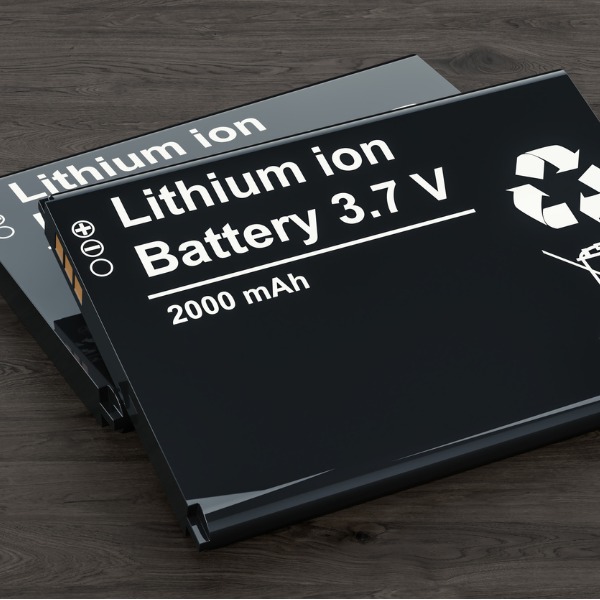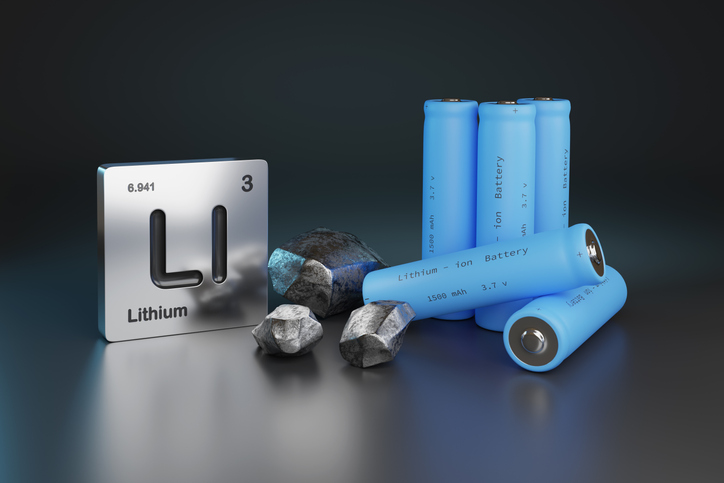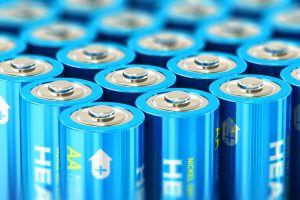In the modern world, lithium batteries have become indispensable. They power cell phones, laptops, and other crucial devices. Many technologies people now take for granted would not be possible without them. Understanding how a lithium battery works is essential to knowing how to use one safely and effectively—and that begins with understanding its chemistry.
This article will explain the basics of lithium battery chemistry. It will discuss the different components of a lithium battery and their role in providing power. Finally, it will examine their advantages and disadvantages, especially how they affect the environment. Read on to learn more about lithium battery chemistry and how it makes modern life possible.
What are Lithium Batteries?
A lithium battery is a type of battery that uses lithium as the primary source of power. It is commonly used in portable electronic devices like cell phones, laptops, and digital cameras. They are also used to power electric vehicles, including cars and scooters. Lithium batteries have a higher energy density than other types of batteries, meaning they can store more energy for their size. This makes them an ideal choice for portable devices, as they are small and lightweight but still provide plenty of power.
Types of lithium batteries
Lithium batteries come in two main types: lithium-ion and lithium polymer.
a. Lithium-ion

A Lithium-ion (Li-ion) battery is a battery that utilizes lithium ions to store energy. These batteries are commonly used in consumer electronics, such as cell phones, laptops, and electric vehicles. They have a high energy density and can last for many charge cycles.
b. Lithium polymer
A Lithium-Polymer (LiPo) battery is a rechargeable battery that utilizes a lithium-ion polymer electrolyte instead of a liquid electrolyte. These batteries are typically used in hobby electronics like radio-controlled cars and drones. They are lighter than their lithium-ion counterparts and can be made in various shapes.
The Chemistry Behind Lithium Batteries
Composition of a lithium battery
The components of a lithium battery include anode, cathode, electrolyte, separator, and packaging.
Anode
The anode is the negative terminal of a lithium battery. It consists of a carbon material, such as graphite, lithium metal oxide, or silicon, and stores electrons that can be released to create a current.
Cathode
The cathode is the positive terminal of a lithium battery. It typically contains a metal oxide, such as lithium cobalt oxide, iron phosphate, or manganese oxide, and stores ions that can be released to create a current.
Electrolyte

The electrolyte is a liquid or gel that allows ions to flow between the anode and cathode. Typically, this is a mixture of lithium salts, such as lithium hexafluorophosphate, dissolved in a solvent, such as ethylene carbonate or dimethyl carbonate.
Separator
The separator is a thin, porous membrane that prevents direct contact between the anode and cathode while allowing ions to flow between them. This helps ensure that the battery does not short-circuit and prevents the electrodes from touching, which could cause a chemical reaction that could damage the battery.
Packaging
The packaging provides mechanical protection and insulation for the battery components and electrical connections for charging and discharging. Typically, this is a hard plastic case with connectors on the ends.
How Lithium Batteries Work
Lithium batteries work by a process called intercalation and de-intercalation. When the battery is being charged, lithium ions move from the anode to the cathode, where they are stored. This process is called intercalation, where lithium ions are inserted between the anode and cathode. When the battery is being discharged, the lithium ions move back from the cathode to the anode, and the electrons flow through the external circuit to power the device. This process is called de-intercalation, where lithium ions are extracted from the anode and cathode.
The lithium ions store the energy in a lithium battery while the electrons flow through the external circuit to power the device. The electrolyte helps move the ions between the anode and cathode while the separator prevents them from coming into contact. This ensures that the battery is safe and works efficiently.
Advantages and Challenges of Lithium Batteries
Advantages of lithium batteries
High energy density
As mentioned earlier, one of the most significant advantages of lithium batteries is their high energy density. This means that they can store more energy in a smaller package than other types of batteries, making them ideal for handheld devices such as cell phones and laptops.
Long lifespan
Lithium batteries also have a long lifespan. They can typically last up to 2000 charge cycles, far more than other types of batteries. This makes them an excellent choice for devices that must be used regularly.
Low self-discharge
Other types of batteries , such as lead-acid or nickel-metal hydride, can lose up to 20% of charge just sitting idle. This doesn’t happen with lithium batteries, as they have a very low self-discharge rate. This makes them ideal for devices that aren’t regularly used but still need to stay powered.
Challenges and safety considerations
Thermal runaway
Lithium batteries can be dangerous if not handled properly. They are susceptible to thermal runaway, a process where the battery rapidly increases in temperature and can lead to fires or explosions. This is why it’s essential to always use the correct charger for your device and never leave a lithium battery unattended while charging.
Aging
When a lithium battery is used regularly, its capacity will eventually decrease due to aging. This can be caused by overcharging or fully discharging the battery. It’s important to follow the manufacturer’s instructions when charging and discharging a lithium battery to maximize its lifespan.
Disposal
Due to their hazardous components, lithium batteries should not be thrown in the trash. They must be disposed of properly or recycled. Many stores and recycling centers offer battery recycling services.
Recent Advances in Lithium Battery Technology
As lithium batteries become more popular, researchers continue developing new ways to make them safer and more efficient. Researchers have recently developed new materials and technologies that could revolutionize the lithium battery industry.
One such development is the solid-state battery . Unlike traditional lithium-ion batteries, solid-state batteries have a solid electrolyte instead of a liquid one. This makes them much safer than conventional lithium-ion batteries, as they are less prone to short-circuiting. Additionally, solid-state batteries can store more energy than their liquid counterparts, making them more efficient.
Another innovation is the use of silicon anodes in lithium batteries. Silicon has a much higher capacity for storing energy than other materials, such as graphite. However, silicon anodes have historically been too fragile for use in batteries. Researchers have recently developed new methods for stabilizing silicon anodes, making them a viable option for lithium batteries.
These developments could lead to significant advances in the lithium battery industry. Solid-state and silicon anode batteries could revolutionize the power of devices, making them safer and more efficient.
Environmental Impact and Recycling of Lithium Batteries

The production and disposal of lithium batteries can significantly impact the environment. Lithium mining , for example, has been linked to land degradation and water pollution. The manufacturing process can also produce toxic chemicals released into the atmosphere.
When disposed of improperly, lithium batteries can release hazardous materials into the environment. This is why recycling or disposing of lithium batteries is essential. Many stores and recycling centers offer battery recycling services, which can help keep hazardous materials out of the environment.
Statistics show that only about 5% of all lithium batteries are recycled, with about 8M tons of waste. This is a surprisingly low number, considering the potential environmental impacts of improper disposal. Increasing public awareness and access to battery recycling services is essential to reducing the ecological impact of lithium batteries.
Future Prospects of Lithium Batteries
The future of lithium batteries is very promising. Lithium batteries are becoming increasingly popular due to their high energy density, long lifespan, and low self-discharge rate. This makes them ideal for various applications, from consumer electronics to electric vehicles. But their potential doesn’t end there.
In the future, lithium batteries could be used to power homes and businesses. This would allow people to use renewable energy sources , such as solar or wind power, efficiently and cost-effectively. Lithium batteries can also store energy from the grid, allowing people to use electricity when it’s most economical. With the right research and development, lithium batteries could revolutionize the power of homes and businesses.
Conclusion
Understanding lithium battery chemistry is essential to understanding how these batteries work and how they can be used safely. Lithium batteries offer many benefits that make them ideal for various applications, from consumer electronics to electric vehicles. They are also becoming increasingly important for renewable energy solutions like solar and wind power.
However, lithium batteries can also pose a risk to the environment if not disposed of properly. People must be aware of the potential hazards and take steps to dispose of lithium batteries responsibly. This allows these batteries to be used safely and sustainably, and their potential can be fully realized. With the right research and development, lithium batteries could revolutionize how society is powered.







